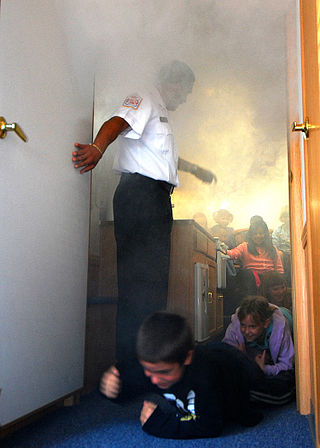
A fire drill is a method of practicing how a building should evacuate in the event of a fire or other emergencies. In most cases, the building's existing fire alarm system is activated and the building is evacuated by means of the nearest available exits, as if an emergency had actually occurred. Fire drill procedures may vary depending on the building type, such as hospitals or high rise buildings, where occupants may be relocated within the building as opposed to evacuating the building. Generally, the evacuation interval is measured to ensure that it is fast enough, and problems with the emergency system or evacuation procedures are identified so that they may be remedied.
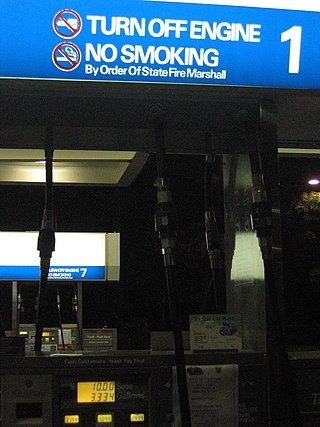
A fire marshal, in the United States and Canada, is often a member of a state, provincial or territorial government, but may be part of a building department or a separate department altogether. Fire marshals' duties vary but usually include fire code enforcement or investigating fires for origin and cause. Fire marshals may be sworn law enforcement officers and are often experienced firefighters. In larger cities with substantially developed fire departments the local fire departments are sometimes delegated some of the duties of the fire marshal.

On Monday, December 1, 1958, a fire broke out at Our Lady of the Angels School in Chicago, Illinois, shortly before classes were to be dismissed for the day. The fire originated in the basement near the foot of a stairway. The elementary school was operated by the Archdiocese of Chicago and had an enrollment of approximately 1600 students. A total of 92 pupils and three nuns ultimately died when smoke, heat, fire, and toxic gases cut off their normal means of egress through corridors and stairways. Many more were injured when they jumped from second-floor windows which, because the building had a raised basement, were nearly as high above ground as a third floor would be on level ground, approximately 25 feet (7.6 m).

The National Fire Protection Association (NFPA) is a U.S.-based international nonprofit organization devoted to eliminating death, injury, property, and economic loss due to fire, electrical, and related hazards. As of 2023, the NFPA claims to have 50,000 members and 9,000 volunteers working with the organization through its 250 technical committees.

Fire safety is the set of practices intended to reduce destruction caused by fire. Fire safety measures include those that are intended to prevent the ignition of an uncontrolled fire and those that are used to limit the spread and impact of a fire.
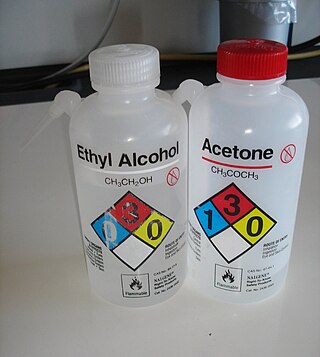
"NFPA 704: Standard System for the Identification of the Hazards of Materials for Emergency Response" is a standard maintained by the U.S.-based National Fire Protection Association. First "tentatively adopted as a guide" in 1960, and revised several times since then, it defines the "Safety Square" or "Fire Diamond" which is used to quickly and easily identify the risks posed by hazardous materials. This helps determine what, if any, special equipment should be used, procedures followed, or precautions taken during the initial stages of an emergency response. It is an internationally accepted safety standard, and is crucial while transporting chemicals.
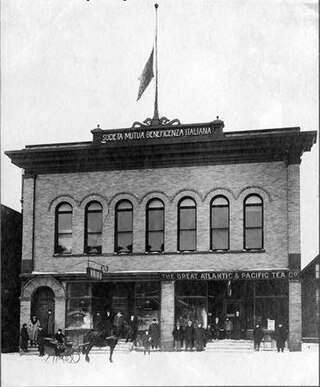
The Italian Hall disaster was a tragedy that occurred on Wednesday, December 24, 1913, in Calumet, Michigan, United States. Seventy-three people – mostly striking mine workers and their families – were crushed to death in a stampede when someone falsely shouted "fire" at a crowded Christmas party.
The publication Life Safety Code, known as NFPA 101, is a consensus standard widely adopted in the United States. It is administered, trademarked, copyrighted, and published by the National Fire Protection Association and, like many NFPA documents, is systematically revised on a three-year cycle.
Fire prevention is a function of many fire departments. The goal of fire prevention is to educate the public on the precautions that should be taken to prevent potentially harmful fires from occurring. It is a proactive method of preventing fire-based emergencies and reducing the damage caused by them. Fire prevention education can take the form of videos, pamphlets, and banners. Often, the messages and lessons are simple tips. Many fire departments will have one or more Fire Prevention Officers, which may also be a routine duty of firefighters.

A fire alarm system is a building system designed to detect, alert occupants, and alert emergency forces of the presence of fire, smoke, carbon monoxide, or other fire-related emergencies. Fire alarm systems are required in most commercial buildings. They may include smoke detectors, heat detectors, and manual fire alarm activation devices. All components of a fire alarm system are connected to a fire alarm control panel. Fire alarm control panels are usually found in an electrical or panel room. Fire alarm systems generally use visual and audio signalization to warn the occupants of the building. Some fire alarm systems may also disable elevators, which are unsafe to use during a fire under most circumstances.
The Golden Age Nursing Home fire took place soon after 4:45 am on November 23, 1963, a mile north of Fitchville, Ohio, United States, killing 63 residents. The news of the fire was overshadowed by the assassination of President John F. Kennedy, which had occurred in Dallas, Texas on the previous day.
Babbs is a community in Kiowa County, Oklahoma, United States. It was named for Edith "Babbs" Babcock. Babbs is 6 miles (9.7 km) south-southeast of Hobart, and is at an elevation of 1,535 feet (468 m).
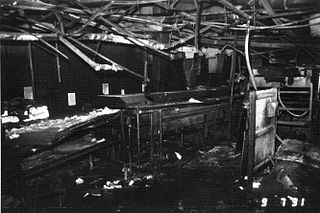
On September 3, 1991, an industrial fire caused by a failed improvised repair to a hydraulic line destroyed the Imperial Food Products chicken processing plant in Hamlet, North Carolina. Despite three previous fires in 11 years of operation, the plant had never received a safety inspection. The fire killed 25 people and injured 54, many of whom were unable to escape due to locked exits. It was the second deadliest industrial disaster in North Carolina's history.
The Office of the Oklahoma State Fire Marshal (OSFM) is an agency of the government of Oklahoma responsible for preventing and investigating loss of life and destruction of property caused by fire. OSFM accomplishes its mission through public education, criminal investigations, building inspections, and fire code enforcement activities.
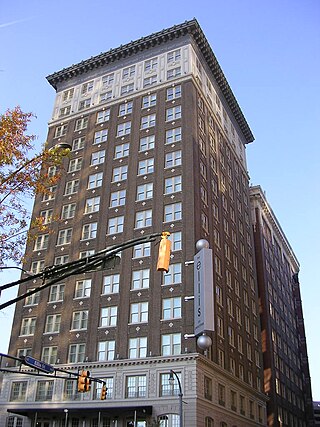
The Winecoff Hotel fire, of December 7, 1946, was the deadliest hotel fire in American history, killing 119 hotel occupants, including the hotel's original owners. Located at 176 Peachtree Street in Atlanta, Georgia, the Winecoff Hotel was advertised as "absolutely fireproof". While the hotel's steel structure was indeed protected against the effects of fire, its interior finishes were combustible and the building's exit arrangements consisted of a single stairway serving all fifteen floors. All of the hotel's occupants above the fire's origin on the third floor were trapped, and the fire's survivors either were rescued from upper-story windows or jumped into nets held by firemen.

Joseph E. Dorman is an American politician who served in the Oklahoma House of Representatives, representing the 65th electoral district between 2002 and 2014. He is a member of the Democratic Party.
The Wild Mary Sudik gusher was an oil well blowout that took place on March 26, 1930 in what is now Oklahoma City, Oklahoma, USA. The gusher from Mary Sudik No. 1 well received extensive media coverage and was the subject of daily radio reports by NBC's Floyd Gibbons and newsreels that were shown in movie theaters. The gusher flowed for eleven days before it was capped on the third try.
Plaza Towers Elementary School is a public elementary school in Moore, Oklahoma, in the Oklahoma City metropolitan area. It is a part of Moore Public Schools. Plaza Towers is located in southwest Moore within a neighborhood of the same name. The school's mascot is the panther, named "Paws". The school's current building opened in 2014 after the previous facility was destroyed by the 2013 Moore tornado; seven students at the school died as a result of the tornado's impact.

The Hope Development School fire started about 9 p.m. on the evening of May 31, 1924 in Playa Del Rey, Los Angeles, California. The fire at the Hope Development School for Deficient Girls killed 24 people, primarily the mentally disabled or behaviorally challenged girls who were residents of the home, as well as the matron and her eight-year-old son.













